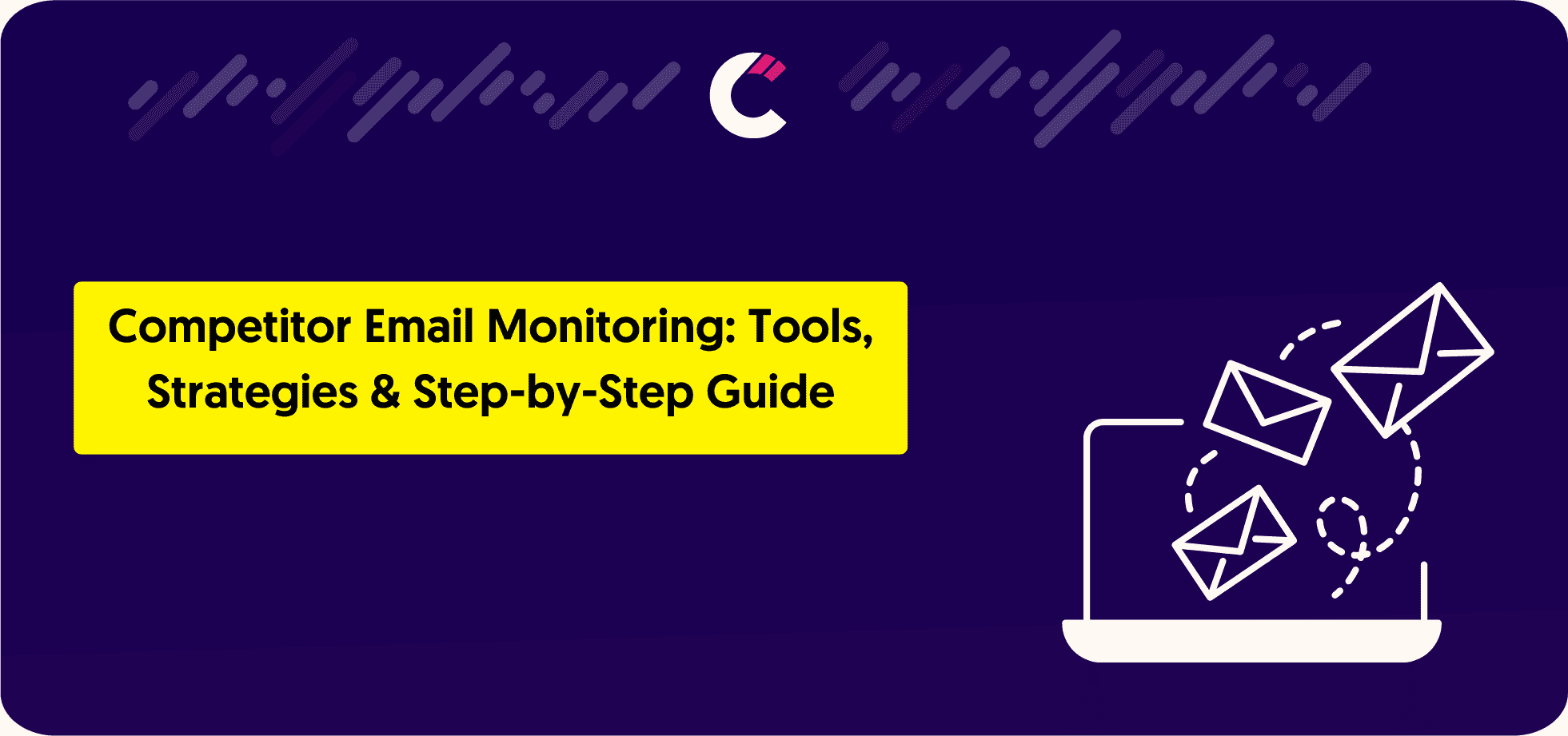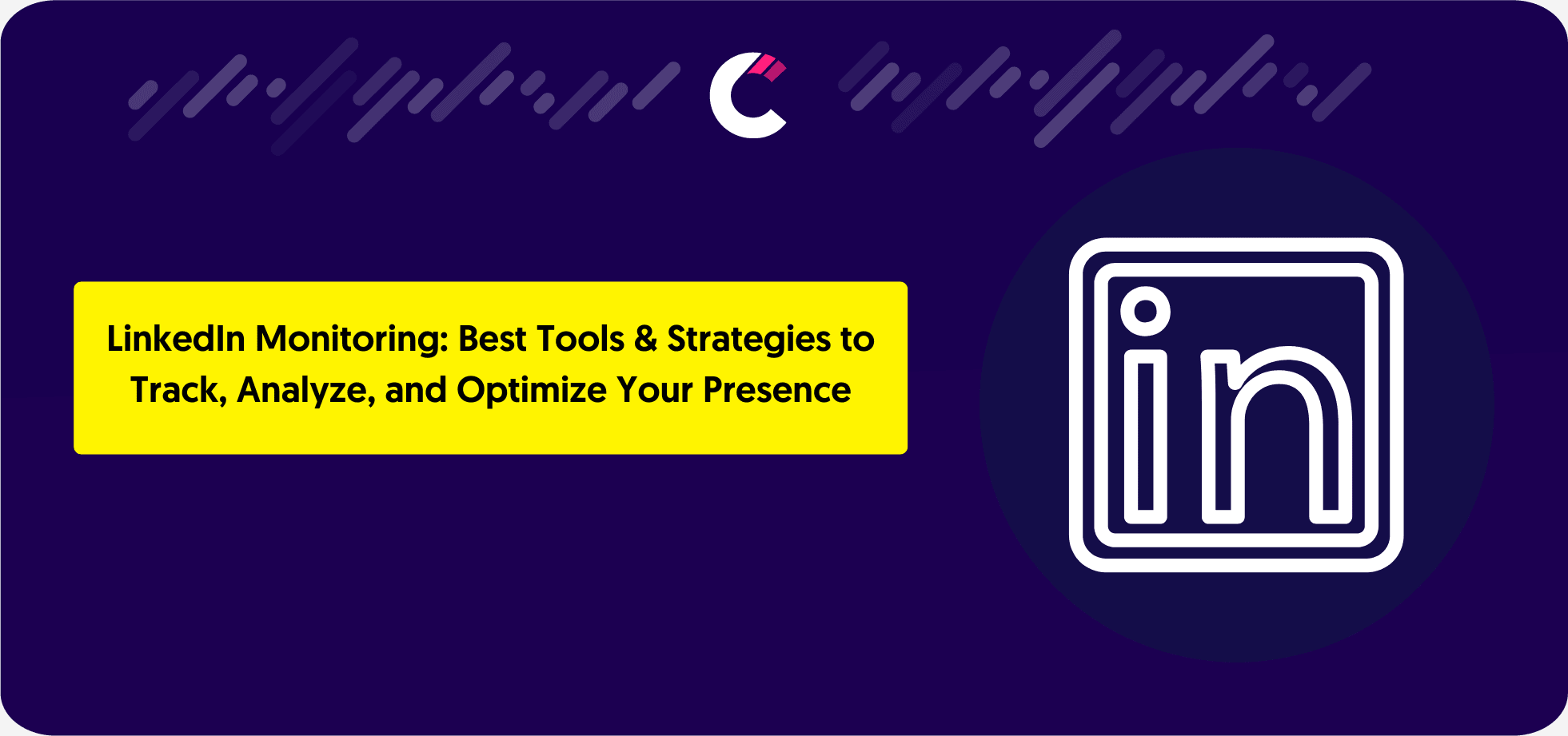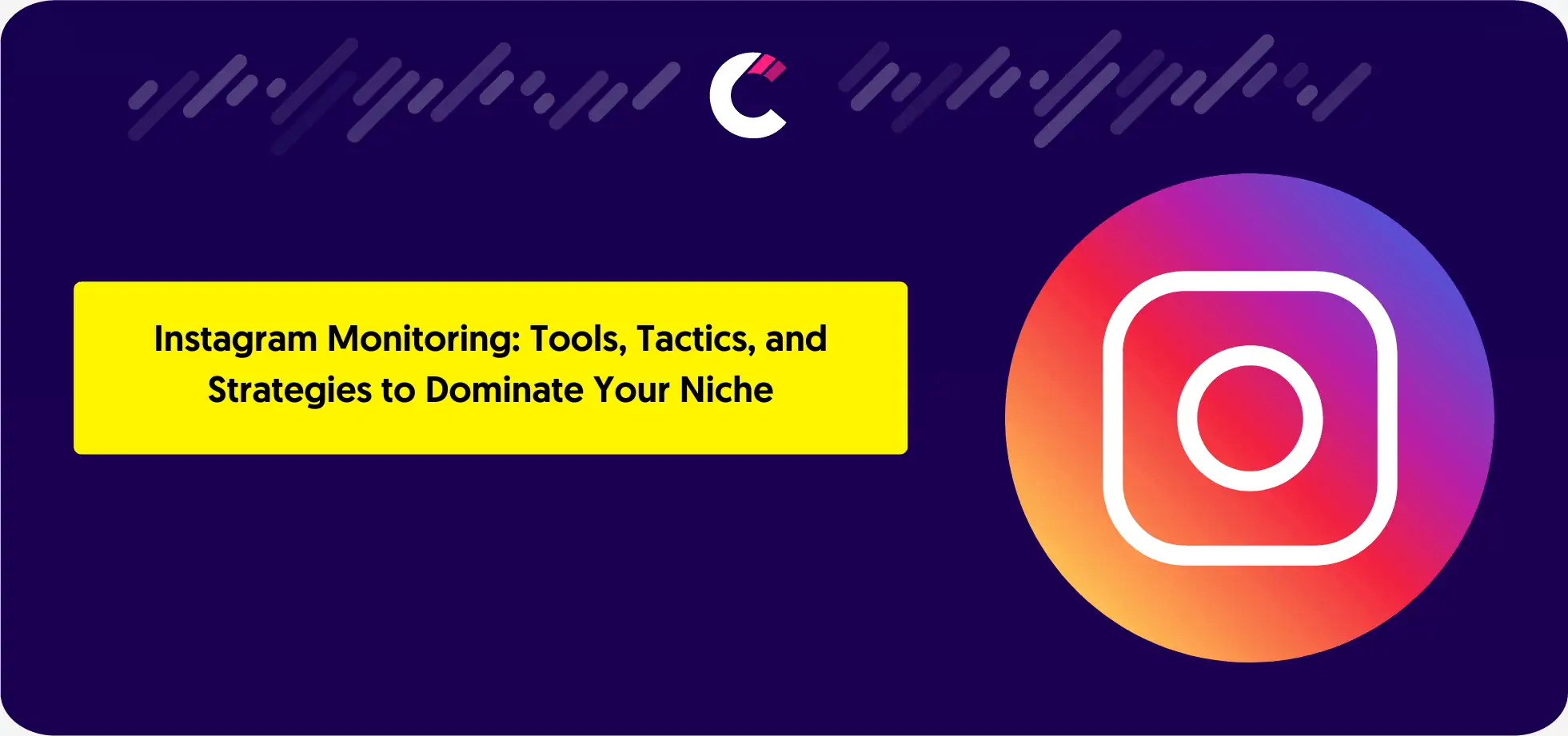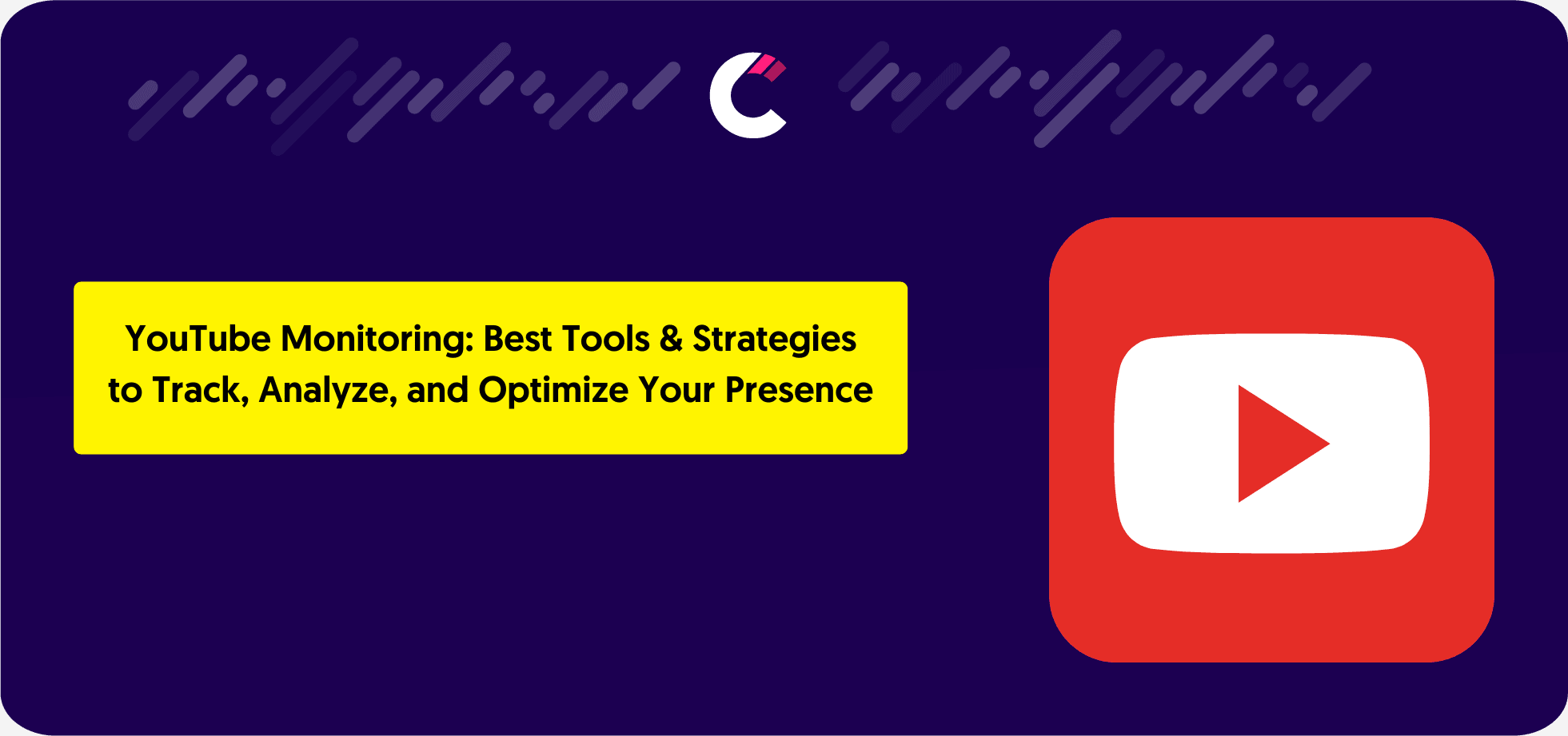What Is Competitor Email Monitoring?
Competitor email monitoring involves tracking and analysing the email marketing strategies of your competitors to gain actionable insights. By subscribing to their newsletters, promotional emails, and announcements, you can understand the type of content they share, the frequency of their campaigns, and the strategies they use to engage their audience through competitor analysis. This practice isn’t about copying but about learning what works in your industry and identifying opportunities to refine your own approach. With tools like Competitors App, you can automate this process, ensuring you don’t miss a single update.
Competitor email monitoring is essential because email marketing remains a powerful channel, with a reported ROI of $36 for every $1 spent. Understanding how competitors achieve success with their campaigns can help you stay competitive and innovate your email marketing strategy.
Why Monitor Competitors’ Email Marketing Campaigns?
Competitor email monitoring provides several benefits that can enhance your marketing strategy:
Gain Insights into Industry Trends:
Identify what content, themes, and strategies resonate with your shared audience. Stay informed about seasonal promotions, product launches, and campaign timing.
Identify and Adapt Successful Tactics:
Leverage competitor insights by analyzing subject lines, CTAs, and email designs that consistently drive engagement. Incorporate effective strategies into your campaigns without duplicating them.
Spot Gaps and Opportunities:
Analyze competitors’ email strategies to detect overlooked customer segments or areas where competitors fall short. Leverage these gaps to offer more personalised or targeted email campaigns.
Stay Ahead of the Competition:
Use advanced tools like Competitors App to automate monitoring and receive real-time alerts. Continuously improve your email marketing approach based on actionable insights.
These advantages ensure that your email campaigns remain competitive and relevant in a dynamic market.
Step-by-Step Guide: How to Check Competitors Email Marketing Campaigns Using Competitors App
After signing up and adding your competitors, you will land on the dashboard page where you can start monitoring their activities. Follow these steps to spy on your competitors emails:
Step 1: Access the Dashboard
Once you've signed up in and added your competitors (as shown in the first screenshot below), the Dashboard will display key metrics such as social engagement, rankings, organic traffic, and followers for each of your competitors.
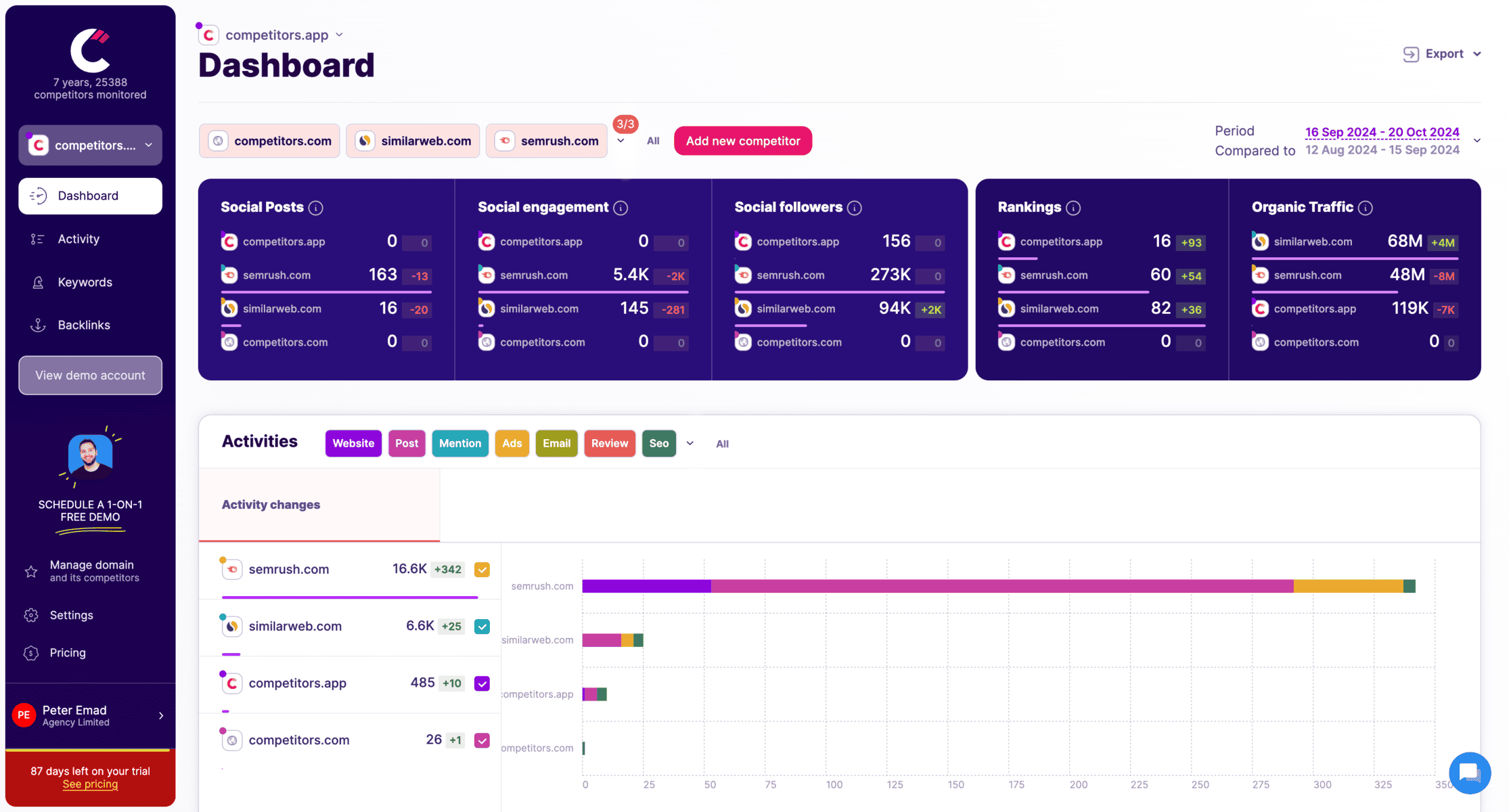
Step 2: Navigate to the "Activity" Tab
On the left-hand sidebar, click on the Activity tab. This will take you to a more detailed overview of what your competitors are doing across various digital channels.

Step 3: Filter for Emails
- Once you’re in the Activity tab, locate the top bar where various activities (Posts, Mentions, Ads, etc.) are shown.
- Select the “Emails” section (as indicated by the red arrow in the screenshot below) to see all of your competitors’ emails

By following these simple steps, you’ll be able to track and analyze your competitors’ email marketing activities using Competitors App.
Tools for Competitor Email Campaign Monitoring
Monitoring competitor email campaigns effectively requires the right tools. Below is an overview of popular tools designed to streamline the process and provide actionable insights:
Competitors App

Competitors App automates the process of monitoring competitor marketing emails by subscribing to their newsletters and capturing promotional emails. It provides detailed analytics and insights, helping you track trends and patterns across various campaigns.
Advantages:
- Automated email collection saves time.
- Real-time alerts keep you updated on new campaigns.
- Comprehensive analytics for subject lines, CTAs, and email frequency.
- Multi-channel tracking (emails, SMS, landing pages).
Disadvantages:
- Requires initial setup to configure tracking for specific competitors.
Unique Features:
- Categorisation and filtering for organised analysis.
- Multi-channel insights beyond just email campaigns.
- Exportable reports for team collaboration.
Pricing: Starting from $19/month.

Tracks competitor social media updates across LinkedIn, Facebook, Twitter, and more.

Monitors changes on competitors’ websites, such as product updates, pricing adjustments, and new messaging, providing instant alerts to help sales teams respond promptly.
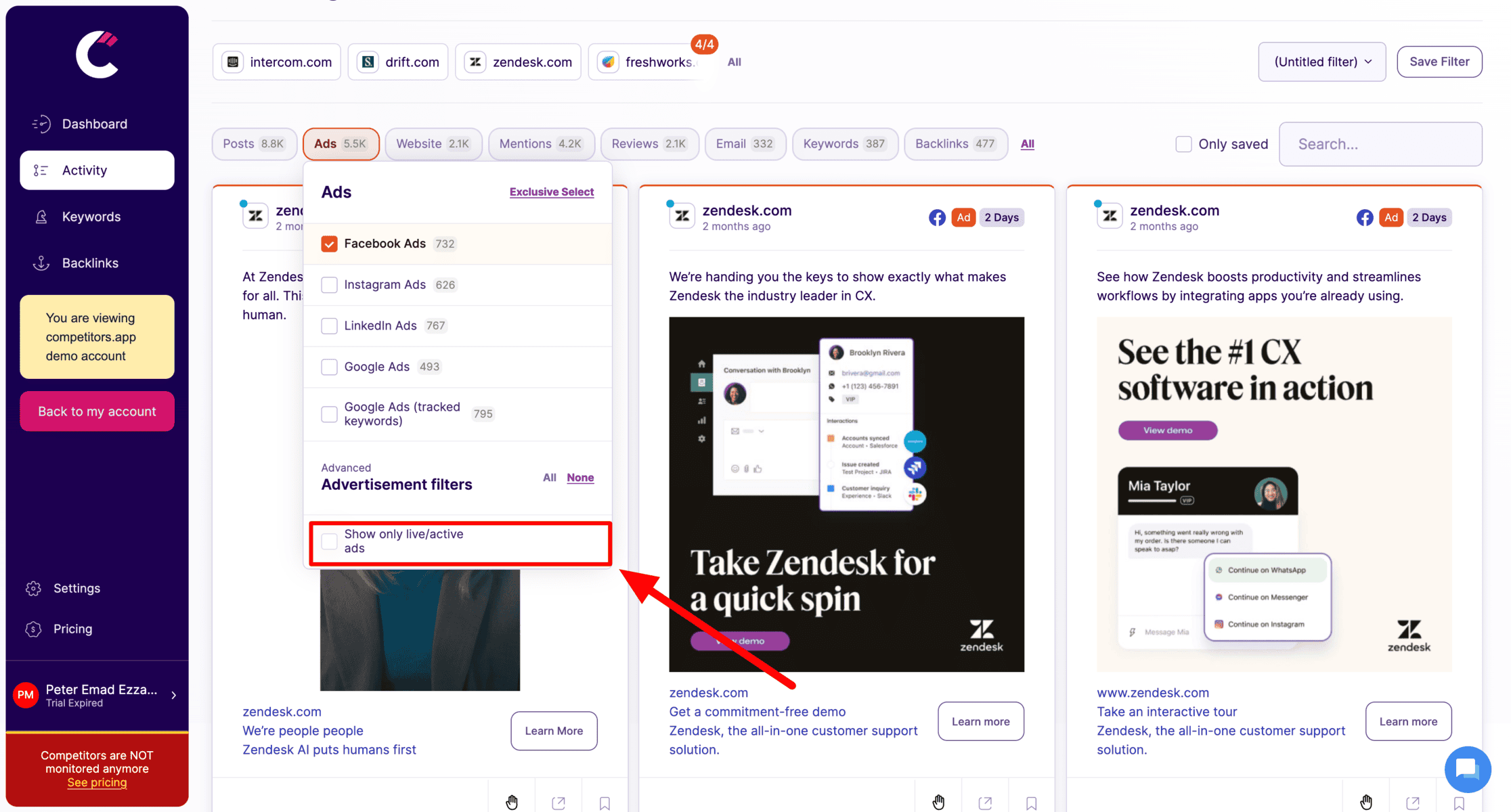
Tracks digital ad campaigns across platforms like Google Ads, Facebook, LinkedIn, and Instagram. It provides details on ad creatives, spending, and performance metrics, helping teams analyze successful ad strategies.

Analyzes competitors’ keyword strategies, organic rankings, and backlinks, allowing teams to refine their own SEO tactics and boost search visibility.
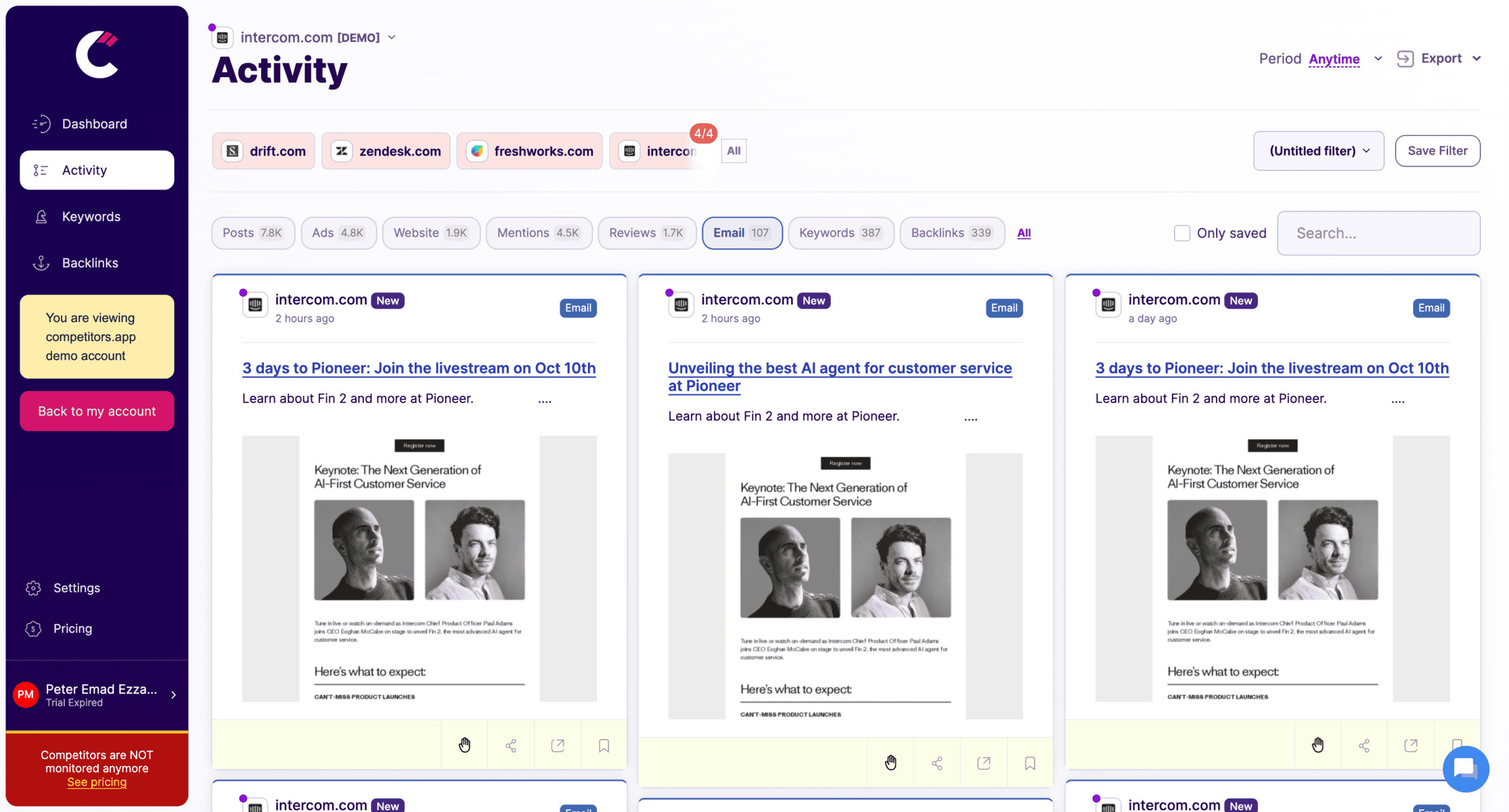
Tracks competitors’ email campaigns, including content, frequency, and engagement metrics, helping sales teams understand email tactics that drive engagement and conversions.
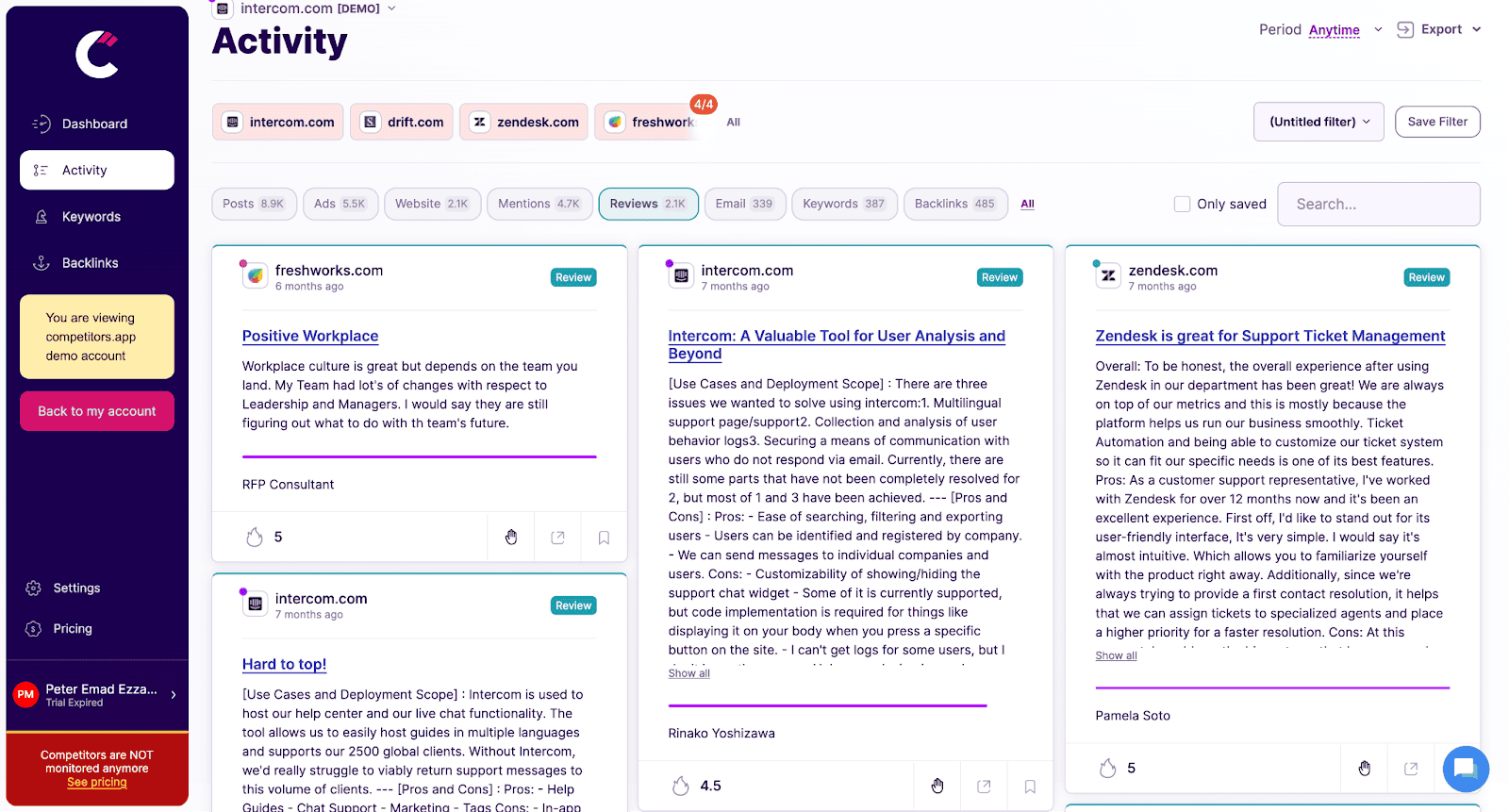
Analyzes customer reviews and ratings for competitors, providing insights into customer feedback, pain points, and product strengths, helping teams craft better sales pitches.
MailCharts

MailCharts offers a vast database of email campaigns from various industries. It allows you to filter campaigns by type, category, and industry, making it ideal for benchmarking and strategic planning.
Advantages:
- Easy access to email campaigns across industries.
- Filters for campaign type, industry, and email categories.
- Ideal for trend discovery and inspiration.
Disadvantages:
- Limited real-time monitoring features.
- Data is more static and historical.
Unique Features:
- Industry-specific campaign filtering.
- Comprehensive library for benchmarking.
Pricing:
Starts from $149/month.
Owletter

Owletter captures and archives competitor emails, highlighting trends in sending frequency and response rates. It’s a straightforward tool for long-term analysis.
Advantages:
- Automated email archiving for historical tracking.
- Highlights trends in competitor email strategies.
- Simple and easy to use.
Disadvantages:
- Lacks in-depth analytics like advanced CTAs or subject line comparisons.
- Limited to tracking email frequency and responses.
Unique Features:
- Long-term trend visualisation.
- Focus on email history rather than real-time updates.
Pricing:
Starting from $29/month.
SendView
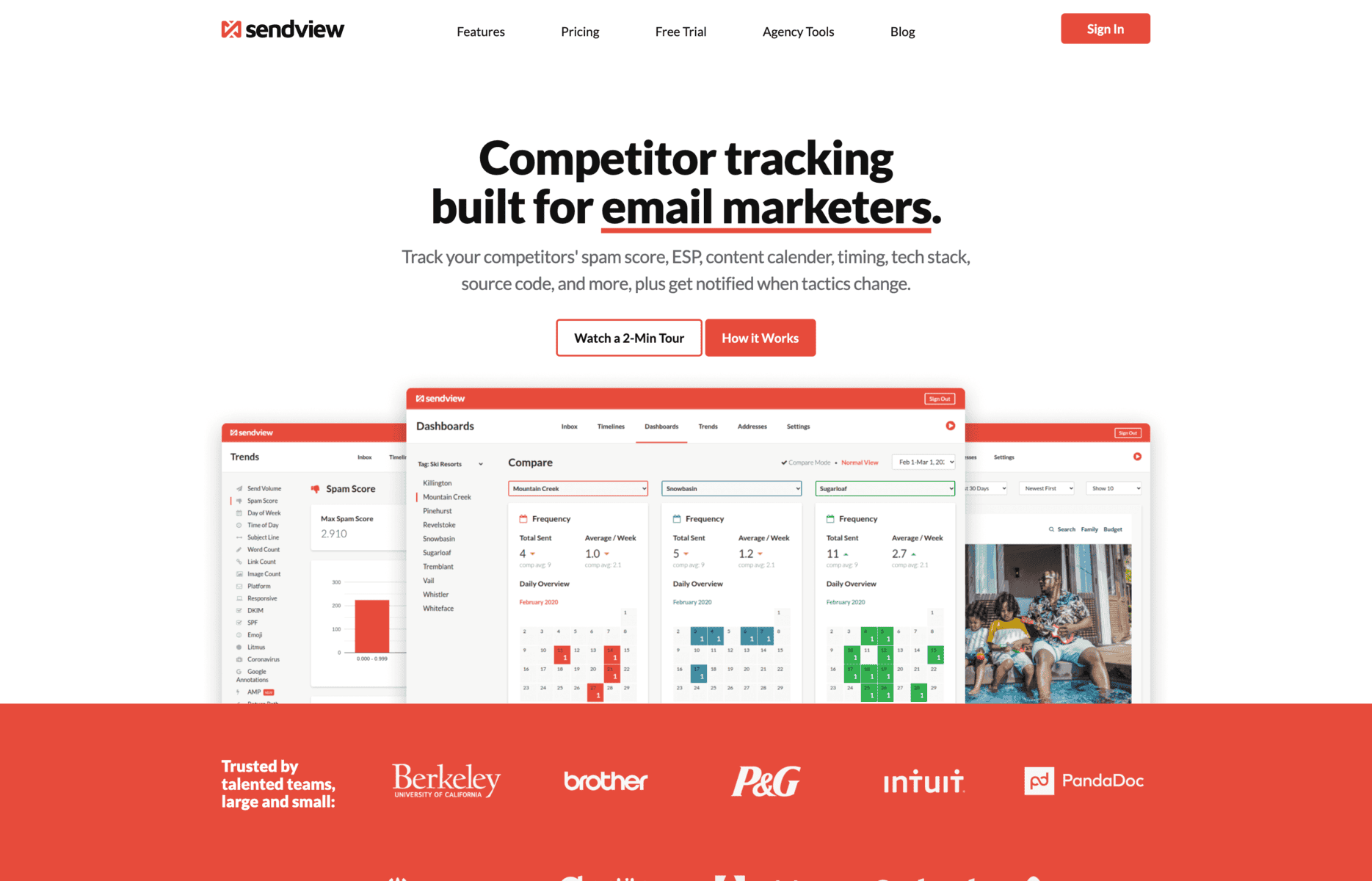
SendView is designed for benchmarking competitor email campaigns, focusing on metrics like deliverability, open rates, and engagement. It provides actionable insights to help you improve performance.
Advantages:
- Delivers specific metrics like open rates and engagement.
- Provides benchmarking data for competitive analysis.
- Great for performance-focused insights.
Disadvantages:
- Limited features for creative inspiration or content analysis.
- Dependent on subscriber-reported data for accuracy.
Unique Features:
- Detailed deliverability and engagement tracking.
- Benchmarking capabilities against industry standards.
Pricing:
Starting from $69/month.
Milled

Milled is a database of newsletters from various brands, offering inspiration for design, messaging, and trends in email campaigns.
Advantages:
- Large database of emails for creative inspiration.
- Easy access to trends in design and messaging.
- Free to browse for ideas.
Disadvantages:
- No tracking or real-time monitoring capabilities.
- Limited analytics features.
Unique Features:
- Focus on design and messaging inspiration.
- Ideal for creative teams looking for fresh ideas.
Pricing: Starts from $99/month.
Really Good Emails

Really Good Emails curates examples of highly effective email campaigns, focusing on design, content, and user experience to inspire marketers.
Advantages:
- Showcases top-performing email designs.
- Easy to browse by category or campaign type.
- Free access to a curated library.
Disadvantages:
- Does not include tracking or analytics.
- Limited functionality beyond inspiration.
Unique Features:
- Focus on UX and design improvements.
- Curated examples for creative inspiration.
Pricing: Free access.
How to Do Competitor Analysis for Email Marketing Without Tools
Conducting competitor analysis for email marketing without tools is entirely possible with a systematic approach. Here’s how you can do it manually:
Subscribe to Competitor Newsletters:
Start by subscribing to your competitors’ newsletters and promotional emails using a dedicated email account. This allows you to gather and review their email campaigns without cluttering your primary inbox.Create a Tracking Spreadsheet:
Maintain a simple spreadsheet to log key details about each email you receive. Include columns for the date sent, subject line, type of email (e.g., promotional, newsletter), and any unique design or content elements.Analyse Email Timing and Frequency:
Track how often your competitors send emails and at what times. This can reveal patterns, such as increased frequency during specific seasons or times of the day, helping you identify their strategy.Review Subject Lines and Preheaders:
Note the style and tone of subject lines and preheaders. Pay attention to whether they use urgency, discounts, or personalization to engage recipients.Examine Content and Design:
Analyse the structure of their emails, including layout, visuals, and messaging. Look for consistent themes, offers, or calls-to-action (CTAs) that might appeal to their audience.Track Landing Pages:
Click on links within the emails to see where they lead. Observe the design and messaging of landing pages to understand how competitors align their emails with broader campaigns.Compare Results to Your Campaigns:
Reflect on how your competitors’ strategies compare to your own. Identify areas where you could adopt successful tactics or improve upon gaps in their approach.
By taking these steps manually, you can gain valuable insights into your competitors’ email marketing strategies without relying on tools. While this method requires more time and effort, it ensures you stay informed and competitive in your industry.
Benefits of Competitor Email Monitoring
Competitor email monitoring offers numerous advantages that can significantly enhance your email marketing efforts. Here’s how it helps:
Enhanced Email Marketing Strategies
By analysing competitors’ email campaigns as part of your overall marketing strategy, you gain insights into what works and what doesn’t. This helps you refine your own strategies, ensuring your campaigns are more engaging and aligned with audience expectations. For instance, you can adopt successful subject lines or improve your timing based on competitor trends.
Improved Customer Engagement and Retention
Understanding how competitors connect with their audience through competitor’s emails enables you to craft emails that are more personalised and appealing. Whether it’s tailoring your content or refining your CTAs, monitoring competitor emails helps you build stronger relationships with your subscribers, leading to higher engagement and loyalty.
Inspiration for New Campaigns and A/B Tests
Competitor email monitoring provides a constant source of inspiration. You can discover creative ideas for email designs, themes, or seasonal campaigns. Additionally, these insights are invaluable for running A/B tests to determine the most effective elements for your audience.
Identifying Industry Trends and Gaps
Keeping an eye on competitors’ campaigns helps you stay informed about evolving industry trends. At the same time, you can spot gaps in their strategies—such as missed customer segments or neglected messaging styles—that you can exploit to differentiate your brand and enhance your own marketing efforts.
Competitor email monitoring is a strategic advantage that empowers your marketing team to stay competitive, relevant, and innovative in a crowded marketplace.
Creating a Competitive Email Marketing Strategy
Creating a competitive email marketing strategy requires a thorough analysis of your competitors’ email marketing efforts and identifying areas for improvement. Here are some steps to follow:
- Analyze Your Competitors’ Email Marketing Strategies: Use the insights gathered from tracking your competitors’ email campaigns to analyze their strategies. Look at the types of emails they send, their frequency, and the content they use. Identify what works well for them and what doesn’t.
- Identify Areas for Improvement: Pinpoint areas where your competitors’ email marketing strategies can be improved. This could include the types of emails they send, their sending frequency, or the content they use. Use these insights to refine your own email marketing campaigns.
- Develop a Unique Value Proposition: Create a unique value proposition that sets your email marketing campaigns apart from your competitors. This could involve offering exclusive content, personalized recommendations, or unique promotions that your competitors don’t provide.
- Create a Content Calendar: Plan your email campaigns with a content calendar that outlines the types of emails you will send, their frequency, and the content. A well-structured content calendar ensures consistency and helps you stay organized.
By following these steps, you can develop a competitive email marketing strategy that leverages insights from your competitors while highlighting your unique strengths.
Best Practices for Competitive Email Marketing Analysis
Competitor email monitoring is an essential part of analyzing your competitors’ email marketing strategies. Here are some best practices to follow:
- Use Email Tracking Tools: Utilize email tracking tools to monitor your competitors’ email campaigns and gain insights into their strategies. Tools like Competitors App can automate this process, providing real-time alerts and detailed analytics.
- Monitor Their Social Media: Keep an eye on your competitors’ social media platforms to get an idea of the types of emails they send and their frequency. Social media can also provide additional context for their email campaigns, such as promotions or events they are highlighting.
- Analyze Their Email Campaigns: Regularly analyze your competitors’ email campaigns to identify areas for improvement in your own strategies. Look at their subject lines, CTAs, design, and content to see what works and what doesn’t.
- Keep Your Monitoring Private: Ensure your monitoring activities remain private to avoid alerting your competitors. This allows you to gather insights discreetly and maintain a competitive edge.
By following these best practices, you can effectively monitor your competitors’ email marketing strategies and use the insights gained to enhance your own campaigns.
How to Know Competition Email Marketing Effect
Understanding the effect of competition email marketing is one of the hardest things to assess. Here are some ways to gauge its impact:
- Monitor Audience Response:
Check for signs of audience interaction, such as social media mentions or reviews that reference competitor emails. This gives an indirect measure of their campaign’s effectiveness. Evaluate Campaign Frequency and Timing:
Frequent and well-timed emails often indicate that competitors have a deeper understanding of their audience’s preferences and habits. Email marketing tools can track this data over time.Review Call-to-Action Success:
Assess the effectiveness of competitor CTAs by observing the promotions they highlight and the landing pages linked in their emails. A successful CTA often leads to noticeable spikes in product visibility or sales.Benchmark Against Your Campaigns:
Compare these insights with your email performance to identify areas for improvement or innovation in your strategies.
By systematically evaluating these factors, you can understand how effective your competitors’ email marketing campaigns are and use this knowledge to refine your own approach.
Frequently Asked Questions About Competitor Email Monitoring
What Tools Can I Use for Competitor Email Monitoring?
Several tools are available to help you track and analyse competitor email campaigns effectively. Competitors App is one of the top options, offering automated email collection, real-time alerts, and detailed analytics. Other tools like MailCharts, Owletter, and SendView provide additional functionalities such as historical email archives, deliverability tracking, and campaign inspiration.
How Often Should I Monitor Competitors’ Email Campaigns?
Regular monitoring is essential to stay updated on your competitors’ strategies. Setting up automated alerts with tools like Competitors App ensures you don’t miss any major updates. For a structured approach, review collected emails weekly or monthly to identify patterns, trends, and new opportunities.
What Metrics Should I Focus On When Analysing Competitor Emails?
Key metrics to monitor include:
- Subject Lines: Understand what grabs attention and drives open rates.
- CTAs (Call-to-Actions): Analyse which CTAs are most effective in driving clicks.
- Frequency: Observe how often competitors send emails to maintain engagement without overwhelming their audience.
- Visuals and Design: Study email layouts, colours, and imagery for creative inspiration.
Can I Monitor Competitor Email Marketing for Free?
Yes, you can monitor competitor email marketing for free by manually subscribing to their newsletters. However, free methods can be time-consuming and lack advanced analytics. Tools like Competitors App offer free trials, allowing you to test their features before committing to a paid plan.
Is It Ethical to Spy on Competitors’ Emails?
Competitor email monitoring is ethical as long as you use publicly available information, such as signing up for their newsletters. Avoid using unauthorised or intrusive methods. Tools like Competitors App automate this process ethically by gathering data from publicly accessible sources.
How Does Competitor Email Monitoring Improve Marketing ROI?
By tracking competitor email strategies, you can identify successful tactics and optimise your own campaigns. This leads to higher open rates, improved engagement, and better conversion rates, ultimately boosting your marketing ROI. Insights from tools like Competitors App help refine key elements such as timing, subject lines, and CTAs.
